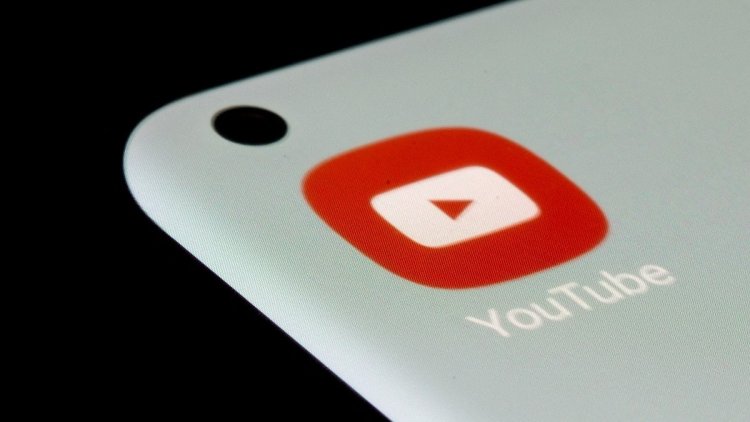YouTube, the 'global' crackdown against ad blockers begins
YouTube, the world's largest video-sharing platform, has embarked on a mission to crack down on ad blockers globally. With a significant portion of users employing ad-blocking software to skip or eliminate ads, this move by YouTube is aimed at preserving the revenue stream for content creators while ensuring a fair advertising ecosystem. In this article, we'll delve into YouTube's crackdown against ad blockers, the impact it may have on users and content creators, and the potential implications for the digital advertising industry.

The Battle Against Ad Blockers
Ad blocking has long been a contentious issue in the digital advertising landscape. While it provides a smoother and more ad-free browsing experience for users, it poses challenges for content creators and the platforms that rely on advertising revenue to sustain their services. YouTube, as one of the largest platforms for both content creators and advertisers, has been particularly affected by the widespread use of ad blockers.
To combat this issue, YouTube has initiated a 'global' crackdown on ad blockers. This move aims to ensure that ads are seen by a wider audience, consequently benefiting content creators who depend on ad revenue to support their channels.
The Enforcement Mechanism
YouTube's approach to cracking down on ad blockers involves a multi-pronged strategy. The platform intends to improve detection algorithms to identify users employing ad-blocking software more effectively. Once identified, these users will experience certain consequences, which may include:
1. Restricted Access:
Users who employ ad blockers may have their access to certain videos and content restricted. In essence, they would encounter limitations on the videos they can watch, especially those from creators who rely on ad revenue.
2. Paywalls:
Another approach YouTube is exploring is the potential introduction of paywalls for users who employ ad blockers. This means that users may be required to pay a fee to access content that was previously free. It's a tactic aimed at dissuading ad-blocking use by highlighting the cost associated with bypassing ads.
3. Education:
In addition to access restrictions and potential paywalls, YouTube is planning to engage in education campaigns. These campaigns are designed to inform users about the importance of advertising revenue to content creators. YouTube intends to encourage users to support their favorite creators by watching ads or considering other revenue-generating methods.
The Impact on Users
The crackdown on ad blockers by YouTube will likely have a noticeable impact on users. For those who have become accustomed to ad-free viewing, the new restrictions and potential paywalls may prove to be an inconvenience. Users may need to weigh the value of accessing ad-free content against the potential costs or limitations imposed.
On the positive side, users who appreciate and want to support content creators may be more motivated to watch ads or engage with other revenue-generating methods. This shift in user behavior could benefit content creators and encourage the production of high-quality content.
The Implications for Content Creators
Content creators on YouTube are at the center of this crackdown. They rely on ad revenue to fund their channels and generate income from their content. Therefore, YouTube's efforts to combat ad blockers have the potential to significantly impact these creators, both positively and negatively.
Positive Impact:
-
Increased Ad Revenue: Content creators may see an increase in ad revenue as a result of the crackdown on ad blockers. With more users viewing ads, creators stand to earn more from their content.
-
Improved Sustainability: The crackdown may enhance the sustainability of content creation on YouTube. Creators who previously faced challenges due to ad blockers may find it easier to continue producing content.
Negative Impact:
-
Audience Size: Content creators may experience a reduction in their audience size if certain videos or content are restricted due to ad-blocker usage. This could impact their reach and overall influence.
-
Potential Backlash: Some users who employ ad blockers may respond negatively to the crackdown, leading to potential backlash against content creators associated with this change.
Implications for the Digital Advertising Industry
The crackdown against ad blockers on YouTube has broader implications for the digital advertising industry as a whole. Here are some key points to consider:
1. A Shift in User Behavior:
The crackdown may encourage a shift in user behavior. As users are prompted to watch ads or support content creators in other ways, the effectiveness of ads could see an increase. This shift may prompt advertisers to reconsider their strategies and messaging to align with user preferences.
2. More Robust Ad Strategies:
Advertisers may need to develop more robust ad strategies to create content that is engaging and relevant to users. Quality advertising that resonates with the audience is less likely to be skipped or blocked.
3. An Ongoing Battle:
The crackdown against ad blockers on YouTube is a part of the ongoing battle between content creators, platforms, and users. As technology evolves, the strategies used to block or bypass ads are also likely to evolve, requiring constant vigilance and adaptation by both platforms and advertisers.
4. New Revenue Models:
The crackdown may lead to the exploration of alternative revenue models. Content creators and platforms may seek innovative ways to generate income that aren't solely reliant on traditional advertising.
Also Check The First Benchmarks of Snapdragon X Elite Laptops: A Game-Changer in Mobile Computing
The Future of Advertising on YouTube
YouTube's 'global' crackdown against ad blockers is a noteworthy development in the ongoing battle between ad blockers, content creators, and advertisers. While it aims to preserve the ad revenue that supports content creators and platforms, it also has the potential to change user behavior and influence the digital advertising landscape.
The success of this crackdown and its long-term impact remain to be seen. It is likely that the battle between ad blockers and those seeking to counteract them will continue to evolve, shaping the future of advertising on platforms like YouTube. As users and content creators adapt to these changes, the digital advertising industry will need to remain nimble and innovative to meet the ever-changing landscape of user preferences and technologies.





































